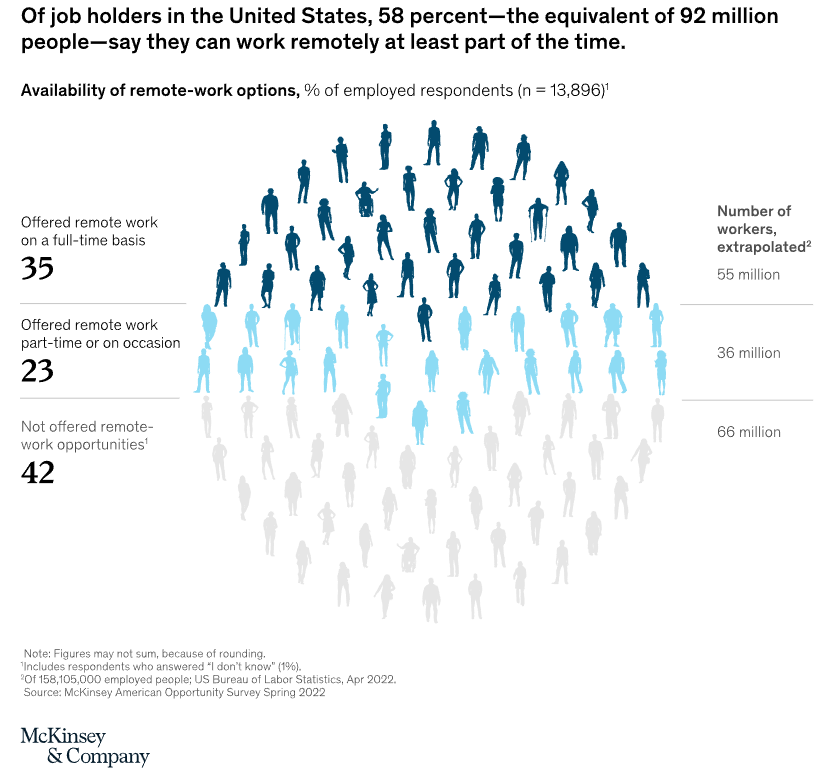|
|
 |
Smoother Sailing: Using Remote Access Software for Onboarding Remote Employees |

The remote work revolution is here to stay. A McKinsey study found that 58% of U.S. job holders have the option to work remotely at least part of the time. This shift presents exciting opportunities for businesses to access a wider talent pool but also necessitates adjustments to traditional onboarding processes. For geographically dispersed teams, remote access software is a powerful tool to bridge the physical gap and ensure a smooth, efficient onboarding experience for new hires.

Challenges of Remote Onboarding
Onboarding sets the stage for a new employee's success and engagement. However, traditional, in-person onboarding can take much work to replicate in a remote setting. Here are some key challenges:
- Setting Up the Work Environment: Equipping new hires with the necessary hardware and software can be logistically complex when they're not physically present.
- Providing Access to Resources: Granting access to company applications, files, and internal systems requires a secure and streamlined approach.
- Building Connections and Culture: Fostering a sense of belonging and team spirit can be more challenging without face-to-face interactions.
Remote Access Software to the Rescue
Remote access software solves these challenges by allowing authorized users to access a remote computer or network securely. This technology streamlines the onboarding process for geographically dispersed teams in several ways:
- Simplified Equipment Setup: IT teams can remotely configure new hires' computers, install essential software, and troubleshoot technical issues. Remote support and access tools can significantly reduce IT support resolution times, freeing up valuable resources.
- Efficient Access Management: Remote access software enables the creation of customized user accounts with controlled access levels to specific applications and files. This ensures security and compliance while granting new hires the tools they need to be productive from day one.
- Virtual Tours and Software Training: Screen-sharing features within remote access software allow virtual tours of company systems and software training sessions. New hires can visualize their work environment and receive hands-on guidance on critical applications, reducing the learning curve.

Enhancing the Onboarding Experience
Beyond practical applications, remote access software can foster a more engaging onboarding experience:
- Personalized Introductions: Managers can virtually introduce new hires to colleagues using screen-sharing features, allowing them to put faces to names and fostering connections.
- Real-Time Collaboration: Collaboration tools within remote access software enable new hires to work alongside colleagues on projects, promoting inclusion and teamwork.
- Remote Shadowing: Supervisors can use remote access software to shadow new hires during their initial tasks, providing real-time feedback and support without being physically present.
Best Practices for Success
To maximize the benefits of remote access software for onboarding, consider these best practices:
1. Develop a Clear Onboarding Plan
Craft a detailed roadmap outlining the onboarding activities facilitated by remote access software. This plan should encompass pre-boarding tasks like sending login credentials, scheduling Day One activities like virtual introductions and software training, and outlining a week-by-week breakdown of critical milestones for the initial onboarding period. Defining communication channels ensures smooth information flow throughout the process.
2. Ensure Timely Access to Resources
Before a new hire's first day, verify they have received the necessary tools to perform their duties; this may involve coordinating with shipping providers to ensure all hardware, such as laptops, phones, or other essential devices, reach the user in time. It is also vital to provide clear instructions on downloading and installing critical programs, whether a VoIP phone to enable seamless communication or sales automation software for the employee's specific job requirement. By proactively planning and addressing these logistical aspects, you can minimize technical hurdles and ensure a smooth transition into the role.
3. Provide Comprehensive Training
Train IT staff on using remote access software securely and effectively for onboarding purposes. New hires should also receive training on the software they'll use for their daily tasks.
4. Prioritize Security
Implement strong security measures like two-factor authentication and access controls to ensure secure remote access sessions. Enforce session timeouts and educate all parties on safe practices to minimize security risks during and after onboarding.
5. Maintain Open Communication
Bridge the physical distance with open communication channels and promote transparency by setting clear expectations and getting new hires up to speed with the latest team updates. Encourage new hires to ask questions, share concerns freely, and utilize video conferencing and instant messaging for two-way dialogue. Schedule regular check-ins for feedback and support and ensure easy access to managers and IT for a smooth transition.
By strategically leveraging remote access software, companies can create a successful onboarding experience for their remote workforce. Remote access software goes beyond providing the technical necessities; it bridges the physical gap and helps new hires feel they are an integral part of the team. As the remote work landscape evolves, embracing innovative solutions like remote access software will be vital to attracting and retaining top talent in a geographically dispersed world.
|
|
|
|
|
|||||
|
© 2025 ShowMyPC. All rights reserved.
|
||||||||


